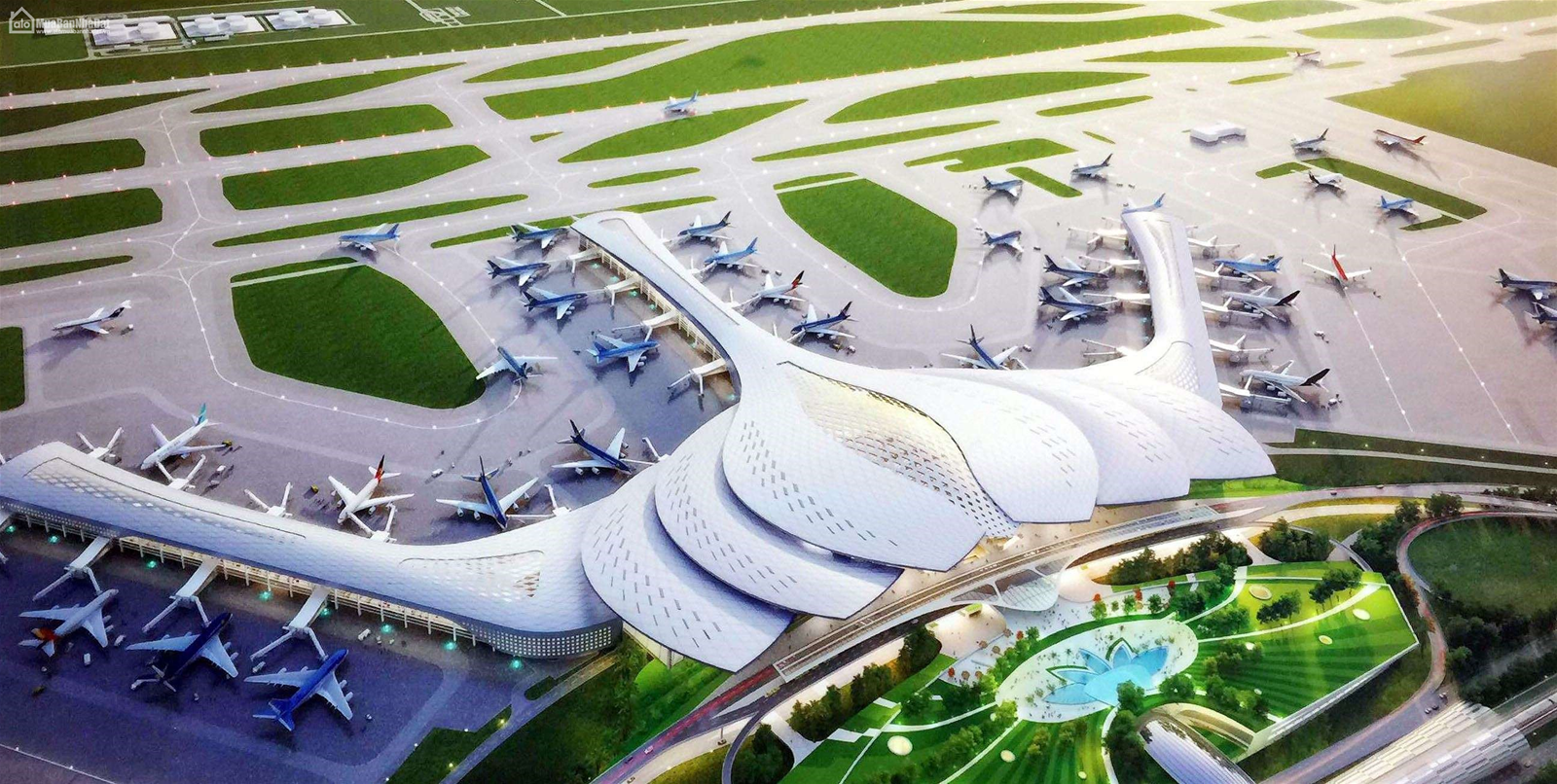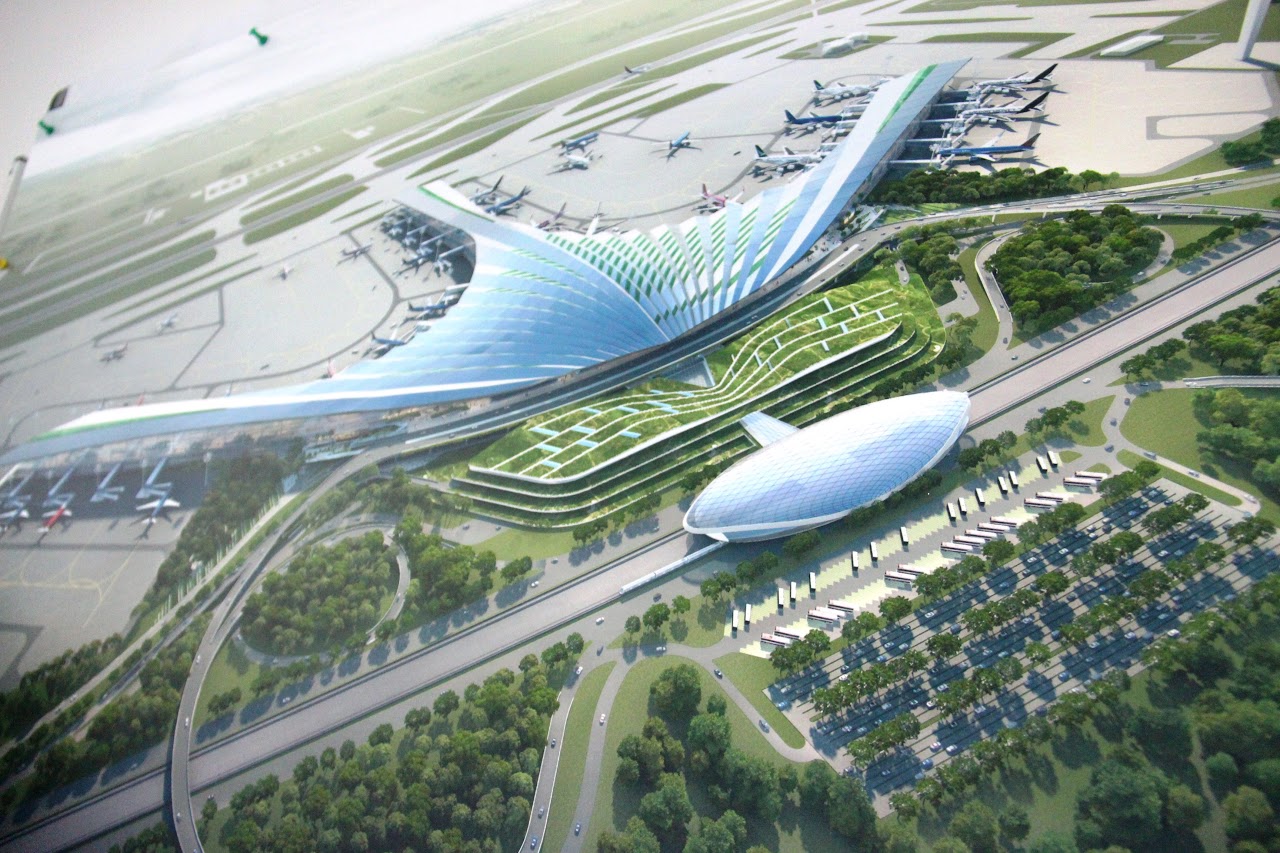
The 14th-tenure National Assembly(NA), at its 8th session, over 90 percent of lawmakers voted in approval of a resolution on the feasibility report for the first phase of the Long Thanh International Airport project in the southern province of Dong Nai on November 26.
The Resolution was passed by 435 of the 455 NA delegates. According to the Resolution, the first phase will invest in the construction of one runway and one passenger terminal along with auxiliary items and have a capacity of 25 million passengers and 1.2 million tons of cargo a year.
NA deputies had asked the Government to compare the cost of the Long Thanh international airport project with that of similar airport projects around the world and to continue consulting with local and international experts on the project as the estimated number of passengers and required investment are high.
Deputy Truong Trong Nghia from HCMC noted that Thailand’s Suvarnabhumi Airport, with a capacity of 100 million passengers per year, required only US$5 billion in 2006, while Australia’s Sydney Airport, which has a capacity of 82 million passengers per year, will receive US$3.8 billion in funding over the next decade.
The Beijing Daxing International Airport in China covers 4,700 hectares, has seven runways and a capacity of 72 million passengers and four million tons of cargo and requires an investment of US$11.7 billion; and the Istanbul International Airport in Turkey, which has four runways and a capacity of 90 million passengers, requires an investment of US$12 billion.
The NA assigned the government to consider and decide on total investment for the project in accordance with the law on public investment, construction, and management and use of public assets, and other relevant laws, including costs of site clearance and compensation, and ensure that total capital will not exceed the amount within NA Resolution No.94.

The required investment is equivalent to the costs of similar airport projects worldwide.
For example, the third phase of the Frankfurt International Airport in Germany with a capacity of 21 million passengers per year requires an investment of US$4.5 billion, or some US$5.3 billion for 25 million passengers.
Further, the Incheon International Airport in South Korea, which can annually serve 18 million passengers, requires US$4.3 billion, or US$5.9 billion for 25 million passengers.
“The Law on Bidding clearly stipulates investor selection under the authority of the government and the Prime Minister,” according to the NA Standing Committee.
The Resolution stated that the government selects investors according to the provisions of the law to ensure national defense, security, and the State’s interest and the national interest, as well as State management, in accordance with the provisions of the law on civil aviation and use for military purposes.
The NA also requires the use of investor capital without a government guarantee and that investors ensure the schedule, feasibility, effectiveness, and publicity and transparency of capital mobilization plans.

By passing the Resolution, the NA agreed to adjust the land area from 1,050 ha to 570 ha for national defense and 480 ha for construction of aviation infrastructure for military and civil use. The management and use of shared areas will comply with the provisions of land legislation and civil aviation law, giving priority to military activities when performing defense tasks.
The Resolution also allows the supplement of two transport routes connecting the project: Route 1 connecting to Highway 5 and Route 2 connecting Ho Chi Minh City - Long Thanh - Dau Giay Highway.
It requires the government direct the State Evaluation Council, the Ministry of Transport, relevant ministries and branches, and the Dong Nai Provincial People’s Committee to urgently review and complete the feasibility report of the project in order to ensure quality and progress, for submission to the Prime Minister for an investment decision.
In particular, content about total investment, socioeconomic and financial efficiency, key technologies, management, operations, exploitation, the training of human resources, mechanisms, and specific policies continue to be clarified (if necessary), while completing land acquisition, compensation, and support and resettlement to hand over ground in line with the construction schedule, ensuring the completion and putting into operation the project in accordance with the requirements of Resolution No.94 / 2015 / QH13 (with phase 1 to be completed and in operation by 2025).
The government was also assigned to research and invest in building a transport network connecting Long Thanh International Airport with the Southern Key Economic Zone, in sync with each investment period, so it becomes a regional and international transshipment airport.

















